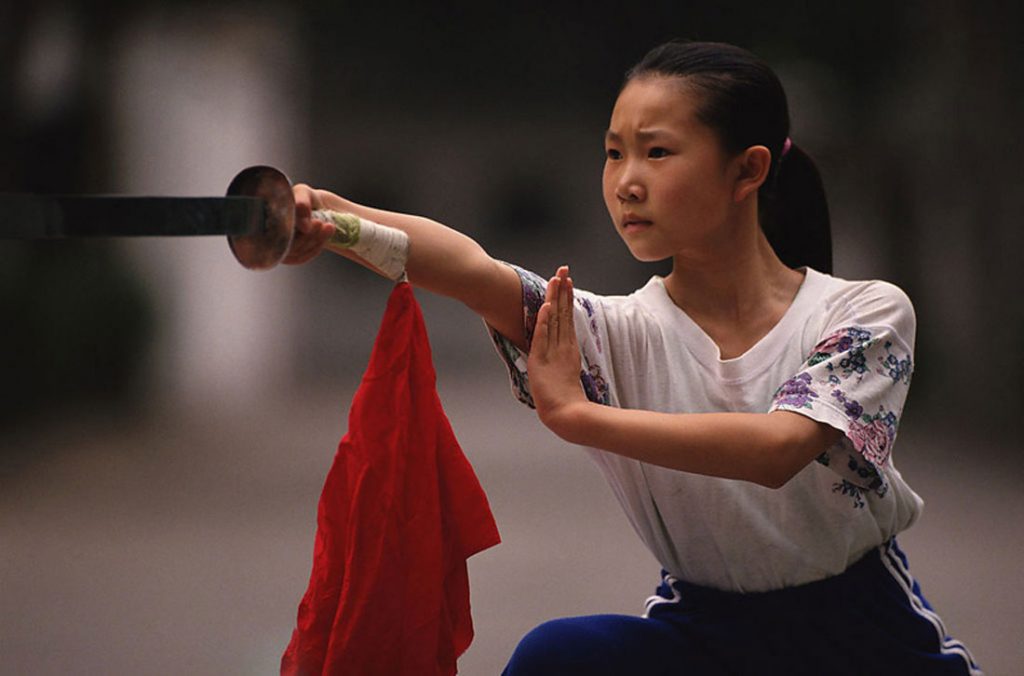
Competitive wushu is composed of two disciplines: taolu (forms) and sanda (sparring).
Taolu involves martial art patterns and maneuvers for which competitors are judged and given points according to specific rules. The forms comprise basic movements (stances, kicks, punches, balances, jumps, sweeps and throws) based on aggregate categories of traditional Chinese martial art styles and can be changed for competitions to highlight one’s strengths. Competitive forms have time limits that can range from 1 minute, 20 seconds for some external styles to over five minutes for internal styles. Modern wushu competitors are increasingly training in aerial techniques such as 540-, 720-, and even 900-degree jumps and kicks to add more difficulty and style to their forms.
Sanda (sometimes called sanshou or Lei Tai ) is a modern fighting method and sport influenced by traditional Chinese boxing, Chinese wrestling methods called Shuai jiao and other Chinese grappling techniques such as Chin Na. It has all the combat aspects of wushu. Sanda appears much like Kickboxing, but includes many more grappling techniques. Sanda fighting competitions are often held alongside taolu or form competitions.[/vc_column_text][vc_empty_space][vc_column_text]
History
In 1958, the government established the All-China Wushu Association as an umbrella organization to regulate martial arts training. The Chinese State Commission for Physical Culture and Sports took the lead in creating standardized forms for most of the major arts. During this period, a national Wushu system that included standard forms, teaching curriculum, and instructor grading was established. Wushu was introduced at both the high school and university level. This new system seeks to incorporate common elements from all styles and forms as well as the general ideas associated with Chinese martial arts. Stylistic concepts such as hard, soft, internal, external, as well as classifications based on schools such as Shaolin, Taiji, Wudang and others were all integrated into one system. Wushu became the government sponsored standard for the training in martial arts in China. The push for standardization continued leading to widespread adaptation. In 1979, the State Commission for Physical Culture and Sports created a special task force to teaching and practice of Wushu. In 1986, the Chinese National Research Institute of Wushu was established as the central authority for the research and administration of Wushu activities in China.
Changing government policies and attitudes towards sports in general lead to the closing of the State Sports Commission (the central sports authority) in 1998. This closure is viewed as an attempt to partially de-politicize organized sports and move Chinese sport policies towards a more market-driven approach. As a result of these changing sociological factors within China, both traditional styles and modern Wushu approaches are being promoted by the International Wushu Federation.
Share This Story!
STAY IN THE LOOP




